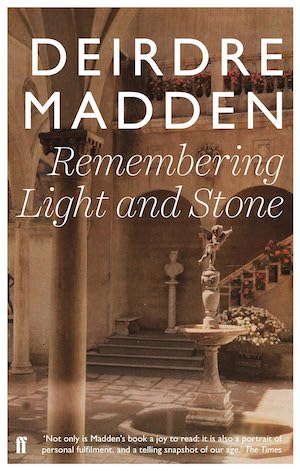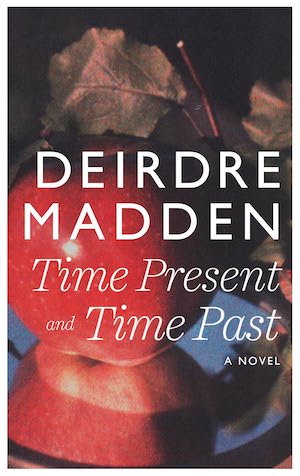 Earlier this week the shortlist for the 2024 Kerry Group Irish Novel of the Year Award was unveiled.
Earlier this week the shortlist for the 2024 Kerry Group Irish Novel of the Year Award was unveiled.
Previous winners of this award have included Christine Dwyer Hickey’s The Cold Eye of Heaven (2012), Eimear McBride’s A Girl is a Half-Formed Thing (2014), Kit de Waal’s My Name is Leon (2017) and Claire Keegan’s Small Things Like These (2022).
Long-time followers of this blog will know that this is my favourite literary prize to follow and I usually read all the shortlisted titles ahead of the winner being announced.
But this year is different. It seems I have already read four of the five novels on the shortlist, which means I just have one book to read before the winner of the €20,000 prize is announced on Wednesday 29 May.
Here’s the shortlist, arranged in alphabetical order by author surname, with a short extract of my review underneath. Click on the titles to read my full review.
‘Old God’s Time’ by Sebastian Barry
From my review: Old God’s Time is set in Dublin in the 1990s and tells the story of a retired policeman who is brought back to help investigate a “cold case”. But this is not a conventional crime novel. It’s a novel that refuses to be boxed in. It’s full of contradictions: complex and multi-layered, yet it’s also a page-turner and effortless to read. It’s an examination of memory, love and survival, blackly humourous in places, harrowing in others — but it should probably come with a trigger warning because at its centre is the utterly vile crime of child sexual abuse as carried out by priests in the Catholic Church.
‘The Happy Couple’ by Naoise Dolan
From my review: The tale is a simple one. It’s about a young betrothed couple, Celine and Luke, who live in Dublin and are planning their happily ever after, but there’s an unspoken secret at the heart of their relationship: neither of them is sure that getting married is the right thing to do. Will they or won’t they proceed with the nuptials? The book injects some originality into the storyline by using a playful structure in which each wedding party member, including the bridesmaid and best man, gives us their own take on Celine and Luke’s romance. But aside from the snappy dialogue and the sassy one-liners, what struck me most about The Happy Couple was the transactional nature of all the relationships. There doesn’t seem to be any genuine love or warmth in the story.
‘The Wren, The Wren’ by Ann Enright
From my review: The Wren, The Wren is an intergenerational tale revolving around a (fictional) famous poet whose poor behaviour has long-lasting impacts on the women in his life. The poet is celebrated for his literary talent, but is a bit of a cad on the home front and treats his wife abominably. He later moves abroad and marries a much younger woman. When the story opens he is long dead but his influence reverberates throughout the generations. The tale is largely framed around the poet’s daughter and granddaughter who take turns telling their stories in alternate chapters, but I didn’t much care for these characters; I felt too distanced from them and found their lives and problems dull and uninspired.
‘Remembrance Sunday’ by Darragh McKeon
From the publisher’s blurb: Chinatown, New York. After a chance encounter with an old friend, Simon Hanlon, an Irish architect, experiences a seizure, his first in almost thirty years. Soon, they come to him daily. As he awaits a brain operation, Simon turns his mind back to his childhood on a farm near the Irish border. At fifteen, he was present when an IRA bomb exploded at the Remembrance Sunday parade in Enniskillen. It was in the following weeks that his seizures first began. Now, he is compelled to seek out the bomber from the remnants of his past, and to ask himself the question: why do we harm one another?
‘The Bee Sting’ by Paul Murray
From my review: The Bee Sting is a spellbinding tragicomic tale that explores the emotional and financial outfall of the 2008 economic crash on one well-to-do Irish family. The story is told in the third person through the eyes of four family members. As the focus moves from character to character, following their missteps and bad decision-making along the way, we gain a more rounded perspective of the family and come to understand why each person is the way they are. Murray also seamlessly weaves in a catalogue of contemporary issues including climate change, online risks for minors, sexual assault, blackmail, identity politics, childhood poverty, materialism and consumerism, binge drinking and alcoholism, and gangster-related crime. The result is a hugely ambitious and immersive novel.
You can read more about the prize via the official announcement.
Have you read any of these novels? Or is there anything on the list that particularly intrigues you?
^^ No longlist is announced for this annual prize. Instead, a shortlist is revealed about a month before Listowel Writers’ Week — Ireland’s oldest literary festival — and the winner is named on the opening night of the festival. This year the festival runs from 29 May to 2 June.





























